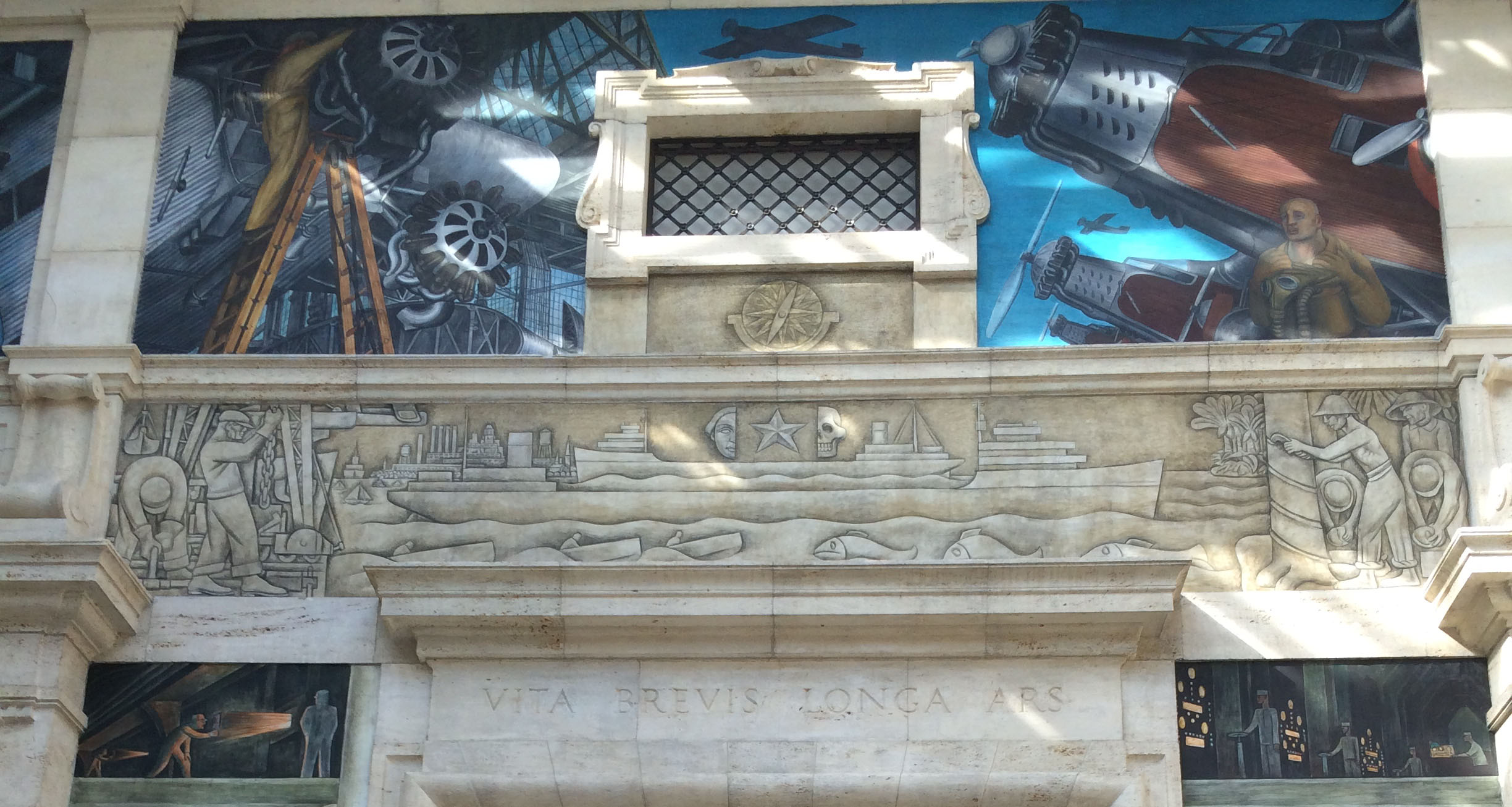Diego Rivera and the Detroit Industry Murals
Gallery

As an art major interested in becoming a muralist, I feel fortunate to be studying in Metro Detroit, which has become the canvas for some of the world’s greatest mural artists. Last semester, the Mirror News covered a story on “Murals in the Market,” where internationally known street artists converged in Detroit’s Eastern Market to paint dazzling murals on the sides of buildings. However, Detroit’s mark on the world of muralism dates back well before last fall. One of the most important muralists in modern art history was commissioned to do arguably his most famous mural on the “Detroit Industry.”
Diego Rivera was a painter and muralist who was born in December of 1886 in Guanajuato, Mexico. In his early life he was fascinated by art and around the age of 10 he began studying art at San Carlos Academy of Fine Arts in Mexico City.
In 1907, he traveled to Europe where he obtained his classical education of the arts and met many leading artists of that day, including Pablo Picasso. It was in 1921 that he began his famous mural work and in the 1930s and 40s he painted several murals in the United States. Perhaps the most famous of these murals is the Detroit Industry Murals, located in downtown Detroit inside the Detroit Institute of Arts.
Rivera had a passion for creating art that reflected the lives of the working class and the native peoples of Mexico. The Detroit Industry murals are so influential because not only are they an incredible artistic feat, they provide an incredibly rich history of the city and its people. Three of the many influences that Diego Rivera had while working on the murals were religious ideologies, political views, and multiculturalism.
Rivera’s interpretation of Detroit industry was largely rooted in his worldview which, in his first encounter of the Rouge Plant, caused him to associate the energy, power and magnitude with archaeological sites in Mexico. One of the images that Rivera associated the Rouge Plant with was human sacrifice, symbolized in the way that the Rouge workers sacrificed their energy for the technological universe. Rivera was largely influenced by socialist and communist political views which can be seen in the south wall of the mural.
At the end of the assembly line he painted a tiny red car speeding off, the only indication in the entire mural of the final product. This symbolizes how the production and the process at the Rouge Plant was much more important to Rivera than the final product.
Diego Rivera painted a variety of races working on the assembly line in the murals, reflecting his views of multiculturalism. To this day that is still an important part of the murals because when Rivera was painting the murals, factories were segregated and federal officials were trying to deport hundreds of Mexican laborers, including many who worked in the auto factories, to Mexico under a program of “Mexican repatriation.” Rivera depicted a vision of multiculturalism in his murals which shows his incredible optimism for an inclusive future for Detroit.
In 1954, Diego Rivera lost his wife, Frida Khalo, who was an artist in her own right, and whose Detroit paintings were the subject of a recent exhibit at the DIA. In the following years Rivera’s health declined. He traveled abroad to receive treatments for cancer to no avail. Then, in November 24, 1957, he passed away from heart failure. Since then, he has been regarded as an important figure in 20th century art and his childhood home in Mexico is now a museum. His Detroit Industry Murals have become famous all over the world, bringing positive attention to the DIA and the city of Detroit. The impact he left on the city with his murals and their influence still holds true today and will continue to be a source of education and admiration for the city of Detroit for years to come.
